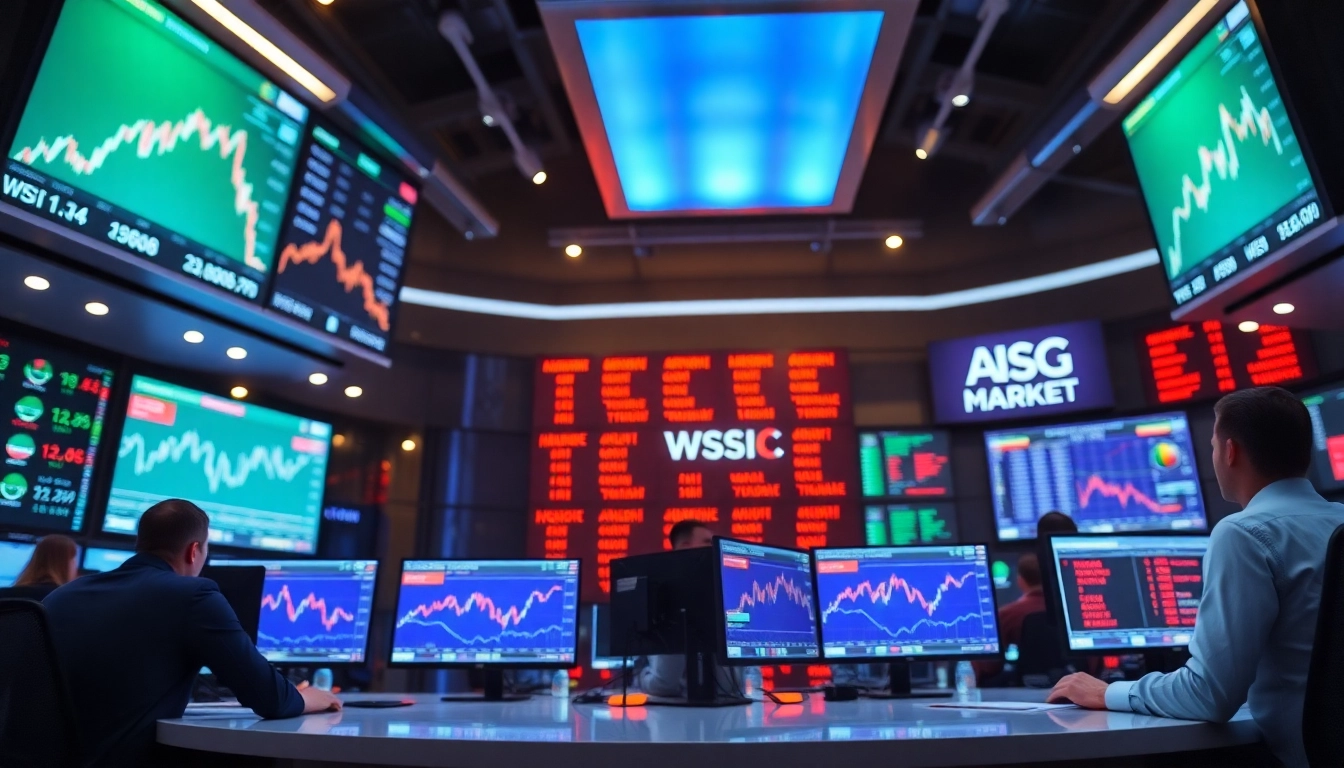
Understanding the Current Landscape of Social Networks
In the rapidly evolving world of social media, staying abreast of the Latest Social Network Updates is crucial for marketers, content creators, and platform developers alike. The digital landscape in 2024 is characterized by significant shifts in platform functionalities, user behaviors, and technological innovations. Major platforms like Facebook, Instagram, TikTok, LinkedIn, and Twitter have rolled out new features and algorithmic modifications aimed at enhancing user engagement and providing more targeted advertising opportunities. Simultaneously, emerging trends such as augmented reality (AR), virtual reality (VR), and AI-driven personalization are redefining how users interact and how brands can connect authentically.
Major Platforms and Their Recent Changes
Each social network has introduced noteworthy updates in 2024 that influence content visibility, user engagement, and advertising strategies. Facebook, for example, has expanded its focus on group interactions and community-building features, integrating more tools to facilitate content discovery within niche groups. Instagram has prioritized Reels and short-form video, enhancing monetization options for creators. TikTok continues to innovate with new editing tools and shopping integrations, bridging entertainment with e-commerce seamlessly.
Twitter, rebranded as X, introduced advanced AI capabilities to refine feed personalization and improve ad targeting, while LinkedIn has enhanced its professional networking potential with new event-based features and improved algorithmic focus on thought leadership content. These changes reflect a broader industry trend toward richer, more interactive platforms that prioritize personalized user experiences and direct monetization pathways for creators and businesses.
Emerging Trends in Social Networking for 2024
Several notable trends define the social networking scene in 2024. AI and machine learning are increasingly embedded into platform algorithms, enabling highly personalized feeds and recommendations. Augmented reality experiences are becoming commonplace, creating immersive interactions that blur the line between digital and physical worlds. Additionally, social commerce has gained momentum, with platforms integrating seamless shopping experiences directly within feeds, live streams, and stories.
Another emerging trend is the rise of ephemeral content—short-lived posts designed for immediacy and authenticity—which fosters real-time engagement. Privacy and data security have also become paramount, leading platforms to adopt more transparent policies and user-controlled data sharing options. These trends collectively influence how brands strategize content creation, user engagement, and advertising techniques to stay relevant and competitive.
Impact of Updates on User Engagement and Business Strategies
Platform updates significantly impact user engagement patterns. Algorithm modifications often shift content feed priorities, requiring brands to adapt their posting schedules and content formats. For instance, increased emphasis on video content means businesses need to produce more dynamic and engaging visuals to maintain visibility.
From a business perspective, staying aligned with platform updates is vital for maintaining or increasing reach. Changes that favor creators and communities open new monetization avenues, but also demand continuous strategy adjustments. Marketers must analyze engagement metrics, refine their target audiences, and experiment with new content forms and advertising options to maximize ROI.
Analyzing the Latest Social Network Updates for Marketers
Key Features and Algorithm Changes
Recent platform updates have introduced refined algorithms that prioritize content based on user preferences, interaction history, and emerging engagement signals. For example, many platforms are now emphasizing authentic interactions over passive scrolling, shifting the focus toward comments, shares, and live interactions. Features like Instagram’s “Collabs” and TikTok’s duet functionalities enable collaborative content creation, boosting engagement and reach.
Understanding these algorithm changes is essential. They often involve complex ranking systems that evaluate multiple engagement metrics, requiring marketers to adapt their content to promote genuine interactions rather than superficial likes.
Optimizing Content for New Platform Features
To leverage new features, brands should prioritize visual storytelling and real-time engagement tactics. Short-form video content, leveraging new editing tools, and experimenting with AR filters can enhance viewer interaction. For instance, creating tutorials or behind-the-scenes content using AR enhances authenticity and engagement.
Implementing platform-specific best practices—such as using trending hashtags and participating in platform challenges—can increase organic visibility. Consistent monitoring of platform updates and adopting early is crucial for maximizing content efficacy.
Measuring the Effectiveness of Social Media Campaigns Post-Update
Post-update analytics have become more sophisticated, allowing marketers to track granular engagement metrics like dwell time, scroll depth, and conversion paths. Tools such as native insights dashboards, third-party analytics platforms, and AI-powered social listening tools enable comprehensive performance evaluations.
Metrics like engagement rate, reach, click-through rate, and conversion rate should be regularly analyzed to understand campaign effectiveness. Adjusting strategies based on real-time data helps optimize content for evolving platform algorithms and user preferences.
Best Practices to Leverage Social Network Updates Effectively
Strategies for Staying Ahead of Platform Changes
Proactive monitoring is critical. Subscribing to platform updates, following industry blogs, and participating in social media marketing communities can keep you informed about upcoming changes. Regularly testing new features in pilot campaigns allows for early adoption and learning.
Developing a flexible content calendar that accommodates rapid shifts in platform functionalities ensures responsiveness. Additionally, fostering a team culture of agility and continuous learning empowers your organization to adapt swiftly.
Tools and Resources for Monitoring Updates
Several tools facilitate tracking social media updates. Platforms like Hootsuite, Sprout Social, and Buffer offer features for monitoring multiple channels simultaneously. Industry newsletters, official platform blogs, and social media forums provide timely insights into feature releases and algorithm changes.
AI-driven analytics tools can help predict future trends and suggest content optimizations based on current update impacts, giving brands a competitive edge.
Case Studies: Successful Adaptation to Recent Social Network Updates
For example, a global fashion retailer swiftly adapted to Instagram’s new shopping features by integrating AR try-ons into their campaigns. This not only increased user engagement but also boosted conversions by 25% within three months.
Similarly, a B2B SaaS company used LinkedIn’s enhanced thought leadership features to double their organic reach by sharing targeted content and participating in industry conversations, demonstrating the power of aligning strategy with platform updates.
Challenges and Opportunities Presented by Social Network Updates
Dealing with Algorithm Changes and Content Visibility
One of the main challenges is maintaining content visibility amid shifting algorithms. Organic reach has declined on some platforms as they favor paid promotion or prioritize user-generated content. To overcome this, brands need to diversify content formats, engage in active community management, and allocate budgets for boosting high-performing posts.
Harnessing New Features for Competitive Advantage
New features often open unique opportunities. Incorporating AR filters, live shopping, or interactive stories can differentiate brands from competitors. Early adoption and creative experimentation position brands as innovative leaders and improve their appeal to the platform’s algorithms.
Future Outlook: Preparing for Upcoming Changes in Social Networking
Looking ahead, the integration of AI, immersive tech, and enhanced data privacy regulations will continue to shape social platforms. Preparing involves investing in emerging technologies, fostering data-driven content strategies, and prioritizing transparency with audiences. Building agile teams ready to adapt will be vital for sustained success.
Implementing and Tracking Social Network Update Strategies
Step-by-Step Guide to Updating Your Social Media Plan
- Stay Informed: Regularly review platform release notes and industry news.
- Audit Existing Content: Assess what types perform best under current algorithms.
- Experiment with New Features: Pilot campaigns utilizing latest platform tools.
- Adjust Content Strategy: Incorporate new formats, optimize for algorithms.
- Monitor Metrics: Use analytics to evaluate outcomes and refine tactics.
Tools for Analyzing Performance Metrics
Effective tools include native platform analytics (e.g., Facebook Insights, Instagram Insights), third-party platforms like Sprout Social, and AI-driven tools such as Brandwatch or Talkwalker. These allow detailed tracking of engagement, reach, sentiment, and conversion metrics.
Adjusting Strategies Based on Data and Trends
Data-driven adjustments include optimizing posting times, refining target audiences, and experimenting with content types. Maintaining flexibility and ongoing testing ensures your social media efforts remain aligned with platform changes and audience preferences.




